As 2018 comes to a close, and we look towards the beginning of NASCSP’s 40th year in 2019, we would like to reflect on the past year. First, where has NASCSP been? Next, what were some of the most important achievements of the year? Check out the map and timeline below to get a snapshot of a busy 2018 in the CSBG and WAP networks!
Where has NASCSP Been?
In 2018, NASCSP conducted trainings in 28 states across the country! In addition to meeting the training and technical needs of our members, NASCSP also hosted two national conferences and presented at the conferences of our partners. Do you need training or technical assistance in your state? Fill out our T/TA request form to get the process started and NASCSP will develop customized training to meet your needs. View menus of common WAP and CSBG trainings here.
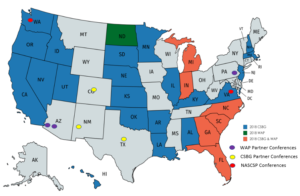
2018 Highlights from WAP & CSBG
January- Energy Briefing on Capitol Hill
In January, Rep. Marcy Kaptur (D-OH) and Jeff Fortenberry (R-NE) held a briefing entitled “Energy Efficiency Means Business in Your District”. David Bracht of the Nebraska Energy Office, a NASCSP member, described the role that the Weatherization Assistance Program (WAP) and State Energy Program (SEP) have in helping States achieve their energy efficiency goals.
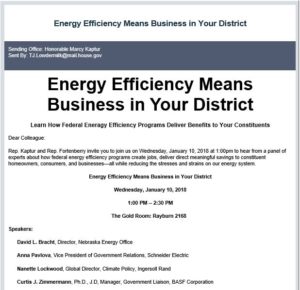
February- NASCSP Winter Conference
CSBG and WAP members convened in Arlington, Virginia for our Winter Training Conference. Check out resources from the conference here. Registration is open for the upcoming 2019 Winter Training Conference which will be held February 11- 15, 2019. The 2019 Annual Conference will be in Little Rock, Arkansas in September.
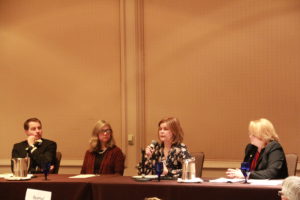
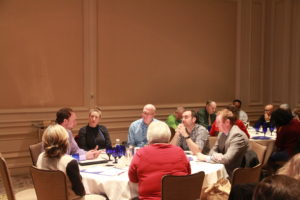
March- WAP Appropriations Activities
As in past years, NASCSP worked together with NASEO to circulate both a House and Senate letter in support of WAP Appropriations. Congressmen Paul Tonko (D-NY) and David McKinley (R-WV) led a letter in support of WAP funding that received signatures from 107 members of the House, 12 more than the previous year. Senator Jack Reed (D-RI) and Senator Susan Collins (R-ME) led a letter in support of WAP funding that received signatures from 41 Senators, 3 more than the previous year. NASCSP also submitted its own House and Senate appropriations testimony. Ultimately, Congress would increase WAP funding by $6 million for FY 2019.
NASCSP also worked with its member, the Washington Department of Commerce, to prepare Andrew Lyons of HopeSource, a local WAP agency in Ellensburg, Washington to testify before the Senate Energy Committee. Lyons described how WAP can make a huge difference in rural communities, particularly when it comes to the health benefits of energy efficiency. Learn more here.
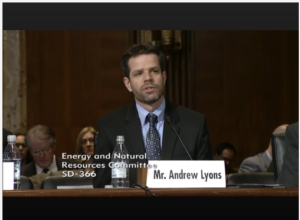
April- Final CSBG IS Submission
In April, States submitted their final CSBG IS survey. NASCSP worked diligently to review databases and work with states to finalize all CSBG IS submissions. NASCSP then began the process of preparing our national report and the Report to Congress. CSBG IS data was also used to formulate customized CSBG state factsheets available here. In April 2019, States will submit the full CSBG Annual Report for the first time.
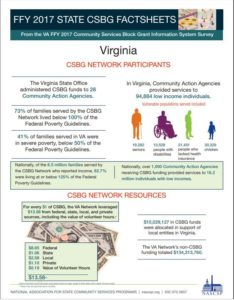
May- Community Action Month
May was Community Action Month! NASCSP worked with the Community Action Partnership (CAP) and the National Community Action Foundation (NCAF) to amplify the message of Community Action all month long. Check out Community Action Month communications resources and infographics here. Additionally, read about CSBG success stories in Texas and Tennessee.
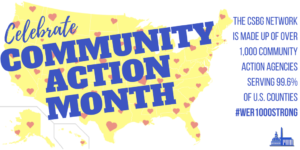
June- WAP Summer Webinar Series
NASCSP held a summer WAP webinar series on several different topics in June and July. Topics were selected based on feedback from WAP State Managers. The recordings can be viewed in NASCSP’s member portal. Check out the webinar descriptions below:
- “Stepping up your Programmatic Monitoring”- This webinar taught participants how to complete an effective desk review and highlighted programmatic monitoring tools from the field to help strengthen programmatic monitoring efforts.
- “Planning & Implementing Effective T&TA”- This webinar covered best practices for planning and implementing WAP T&TA. Participants gained insight into how monitoring data can help build an effective training and technical assistance infrastructure. Presenters from IREC (Interstate Renewable Energy Council), the accrediting body for training centers, also participated in the webinar.
- “Telling the WAP Story: Communicating Impact”- Participants learned how to effectively tell the story of WAP and how it makes an impact in communities. During this session, participants learned how to use social media, infographics, and other resources to amplify their advocacy and outreach efforts.
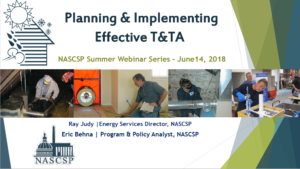
July- CSBG State Plan Receives OMB Clearance
The CSBG State Plan received OMB clearance on July 2nd. NASCSP was heavily involved in the clearance process. In partnership with OCS, NASCSP hosted a multi-webinar series to prepare CSBG State Offices for submission of the plan. Check out the webinar series below: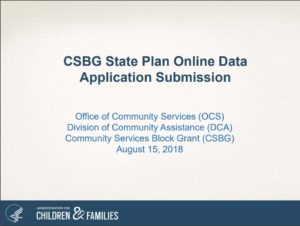
- Submitting the Plan!- Slides| Recording
- Great! We Made It! – Slides| Recording
- Submitting the SF424M – Slides| Recording
- CSBG Eligible Entity Master List – Slides| Recording
- Button Down: Designation Letter(s), Authorizing Officials, Certifications- Slides | Recording
- State Plan Prep!- Slides | Recording
- Changes to the CSBG State Plan – Slides | Recording
August- DATA Task Force Meeting, Washington D.C.
The DATA Task Force convened a two-day in-person meeting on August 8th and 9th in Washington D.C. Task Force members from all over the country representing local agencies, state associations, State Offices, and national partners were in attendance to discuss important issues around the implementation of the CSBG Annual Report. The four subcommittees of the task force met to discuss deliverables they are working on for the network such as a CSBG Lexicon, tool kit for IT systems procurement, data dictionary, and list of sample “Other” indicators to use as write-ins on the CSBG Annual Report.
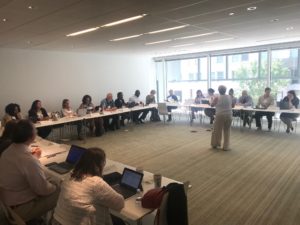
September- Annual Conference in Bellevue, WA
CSBG and WAP professionals gathered for 5 days of training in our wonderful host city of Bellevue, Washington. Additionally, State Monitor’s training was offered as a pre-conference option. Session topics included the CSBG Annual Report, integrating WAP and LIHEAP, Weatherization Plus Health, and more. Representatives from 4 federal agencies attended the conference: HHS, DOE, HUD, and EPA. View materials from the conference here.
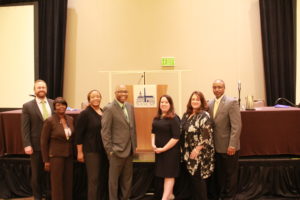
October- Weatherization Day
October 30th marked National Weatherization Day! Governor’s Proclamations were issued in 13 states; events or other actions were held in 36 states. Check out our recap of weatherization day here or browse the hashtag #WxDayOct30 on Twitter to see photos and information from events around the country.
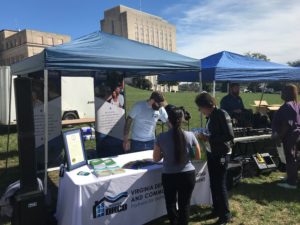
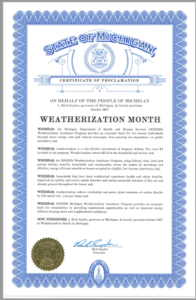
Additionally, on October 1st NASCSP welcomed Amy Klusmeier as she joined the team as WAP State Assistance Director. She comes to NASCSP from the Wisconsin WAP, having worked at a local WAP agency, the State, and a weatherization training provider!
November- New CSBG Resources
On November 1st NASCSP held the webinar: The CSBG Annual Report and Where We’re Heading. Participants received answers to some of the most Frequently Asked Questions about the report and learned about the resources available to assist in reporting. We also released more Annual Report resources, such as a Module 3 Community Initiative Status Form Review Document. This document was developed to assist CSBG State Offices in reviewing Module 3 reporting. Additionally, NASCSP released updated instruction manuals for Module 2 and 4. November also marked the beginning of our Module 3 pre-review Pilot Project with select states.
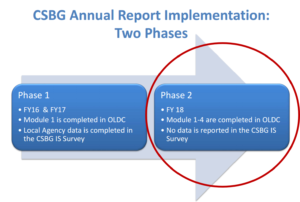
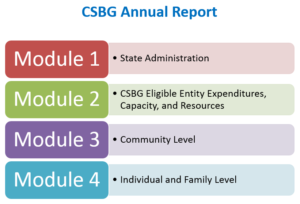
December- Public Charge Rule and New Staff
NASCSP worked together with the Community Action Partnership and CAPLAW to brief the CSBG network on proposed changes to the “Public Charge” rule by the Department of Homeland Security. Under the proposed changes, use of certain government programs would count as negative factors against legal immigrants when they apply for citizenship. Medicaid, SNAP, and certain housing programs are specifically called out in the proposal. The National Partners held a webinar to discuss the rule and the comment period in the federal register. Check out the resources and comment templates here. By the end of the comment period, over 189,000 comments were received on this issue.
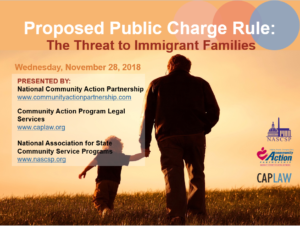
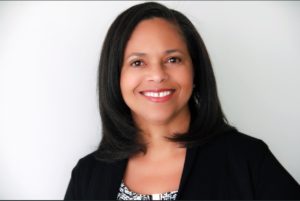 NASCSP added two more dedicated CSBG professionals to our team in December. Pamela Harrison started at NASCSP on December 1st as the CSBG State Assistance Director. Pamela was formerly a State CSBG Deputy Director in California and a member of the NASCSP board. Pamela also comes to NASCSP with extensive experience managing other federal and state funded programs which include the Community Food and Nutrition Program, LIHEAP, Drought Assistance, Prisoner Reentry Initiative, Naturalization Services, and Mentoring Programs.
NASCSP added two more dedicated CSBG professionals to our team in December. Pamela Harrison started at NASCSP on December 1st as the CSBG State Assistance Director. Pamela was formerly a State CSBG Deputy Director in California and a member of the NASCSP board. Pamela also comes to NASCSP with extensive experience managing other federal and state funded programs which include the Community Food and Nutrition Program, LIHEAP, Drought Assistance, Prisoner Reentry Initiative, Naturalization Services, and Mentoring Programs.
 NASCSP also announced that Maribeth Schneber-Rhemrev would be joining the NASCSP team as the CSBG State Assistance Deputy Director on January 15th! She began her career in Community Action at a local agency where she worked her way up from a temporary internship position to ultimately assuming the role of CSBG Director. Most recently Maribeth had the honor of serving as Kentucky’s Director of Family Support where she led the state team responsible for administration and implementation of SNAP, TANF, Medicaid, CSBG, and LIHEAP programs. Maribeth is a Certified Community Action Professional, certified Results Oriented Management and Accountability Trainer, certified Project Management Professional, and holds a Master of Public Administration with a specialization in law and public policy.
NASCSP also announced that Maribeth Schneber-Rhemrev would be joining the NASCSP team as the CSBG State Assistance Deputy Director on January 15th! She began her career in Community Action at a local agency where she worked her way up from a temporary internship position to ultimately assuming the role of CSBG Director. Most recently Maribeth had the honor of serving as Kentucky’s Director of Family Support where she led the state team responsible for administration and implementation of SNAP, TANF, Medicaid, CSBG, and LIHEAP programs. Maribeth is a Certified Community Action Professional, certified Results Oriented Management and Accountability Trainer, certified Project Management Professional, and holds a Master of Public Administration with a specialization in law and public policy.





